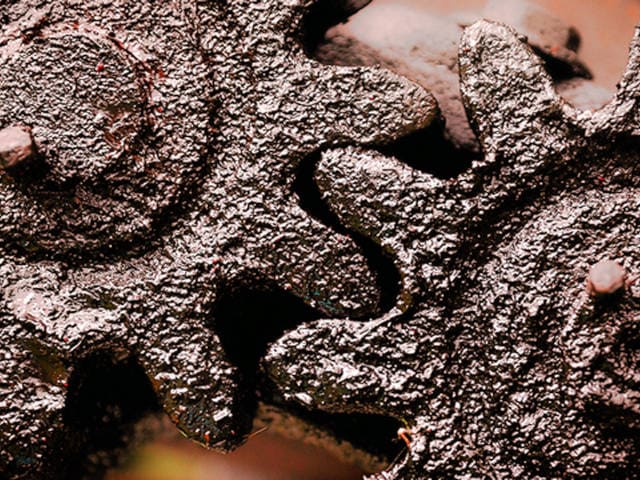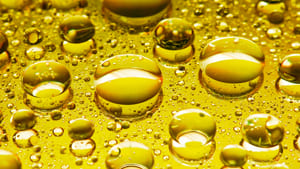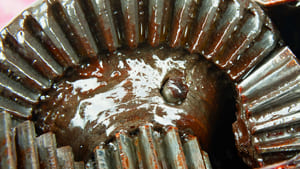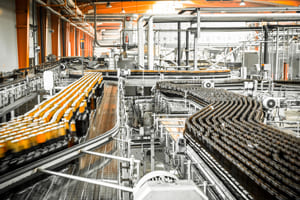Lubricant Contamination Prevention and Mitigation: A Guide for Maintenance Professionals
 Lubricants are essential for the smooth and efficient operation of many types of machinery, from engines and turbines to gears and bearings. However, lubricants can also be vulnerable to contamination from various sources, such as dirt, dust, water, metal particles, microbes, and chemicals. Contamination can degrade the quality and performance of lubricants, leading to increased wear, friction, corrosion, oxidation, and varnish formation in the machines. This can result in:
Lubricants are essential for the smooth and efficient operation of many types of machinery, from engines and turbines to gears and bearings. However, lubricants can also be vulnerable to contamination from various sources, such as dirt, dust, water, metal particles, microbes, and chemicals. Contamination can degrade the quality and performance of lubricants, leading to increased wear, friction, corrosion, oxidation, and varnish formation in the machines. This can result in:
- Reduced efficiency
- Increased downtime
- Higher maintenance costs
- Shorter equipment lifespan
The importance of lubricant contamination control – both prevention and mitigation – often goes unnoticed, despite the substantial financial and operational repercussions it holds. It is crucial for maintenance professionals to understand the importance of lubricant contamination control in operations. You can expect this article to discuss the definition and costs associated with lubricant contamination, as well as preventative maintenance strategies for various environments.
Definition of Contamination Control in Lubrication
 Contamination control in lubrication is the process of minimizing or eliminating the ingress, generation, and accumulation of contaminants in lubricants and lubricated systems. Contaminants can be classified into three categories:
Contamination control in lubrication is the process of minimizing or eliminating the ingress, generation, and accumulation of contaminants in lubricants and lubricated systems. Contaminants can be classified into three categories:
- Particulate
- Liquid
- Gaseous
Particulate contaminants include solid particles such as dirt, dust, metal shavings, wear debris, and microbes. Liquid contaminants include water, fuel, coolant, and other fluids that can mix with or dilute the lubricant. Gaseous contaminants include air, oxygen, nitrogen, carbon dioxide, and other gases that can react with or oxidize the lubricant.
Contamination control in lubrication involves four main steps:
- Exclusion
- Removal
- Monitoring
- Management
Exclusion is the prevention of contaminants from entering the lubricant or the lubricated system, including new lubricants in storage. Monitoring is the measurement and analysis of the level and type of contaminants in the lubrication system. Management is the implementation of policies and procedures to ensure effective contamination control in lubrication.
It is important to understand some of the primary sources of lubricant contamination, which include:
- Lubricant production.
- Transportation or storage.
- Human error.
- Changeovers from old to new lubricants (Santie Oil Company, 2022)
The Cost of Lubricant Contamination on Operating Expenses
Lubricant contamination can have a significant impact on the operating expense of a plant or facility. According to a study by the National Research Council of Canada, particle contamination was the root cause of 82% of wear-related failures. Wear-related failures can lead to:
- Increased repair and replacement costs.
- Reduced equipment availability and reliability.
- Lower production output and quality.
- Higher energy consumption and emissions.
- Increased safety and environmental risks.
The cost of lubricant contamination can be estimated using various methods, such as failure analysis, life cycle costing, ROI analysis, or lost output calculations. Regardless of the method used, lubricant contamination can result in significant production losses.
Most manufacturing plants typically spend 1-2% of their total maintenance budget on lubricants, so the cost of a gallon of oil or tube of grease is not the concern – it’s the cost of the subsequent issues produced by poor lubrication practices.
Preventive Maintenance Strategies for Contamination Control
 The best way to control lubricant contamination is to prevent it from occurring in the first place. Preventive maintenance strategies for contamination control include:
The best way to control lubricant contamination is to prevent it from occurring in the first place. Preventive maintenance strategies for contamination control include:
Proper Storage and Handling
Lubricants should be:
- Stored in a cool, dry, clean, and well-ventilated area.
- Kept in sealed containers with labels or colour codes to avoid confusion and cross-contamination.
- Transferred using dedicated pumps and hoses that are clean and dry.
Proper Selection and Application
Lubricants should be selected based on the specifications and requirements of the equipment and the operating conditions. “Oil is oil” and “grease is grease” expressions should not exist in a maintenance department. Proper lubricant selection for the application is key, as the wrong type can itself be a contaminant. Lubricants should be changed or replenished according to the OEM recommended schedule or condition-based monitoring.
Proper Design and Maintenance of Equipment
Equipment should be:
- Designed with features that prevent or minimize contamination ingress, such as:
- Seals
- Filters
- Breathers
- Expansion chambers
- Maintained regularly to check for:
- Leaks
- Wear
- Corrosion
- Alignment issues
- Cleaned before opening or servicing.
Mitigation Strategies for Contamination Events
Despite preventative measures, contamination events may still occur due to unforeseen circumstances, such as accidents, malfunctions, or human errors. In such cases, mitigation strategies are needed to minimize damage and restore the condition of the lubricant and equipment.
Mitigation strategies for contamination events include:
Proper Identification and Diagnosis of Contamination
Contamination should be:
- Detected as early as possible using methods such as:
- Visual inspection
- Oil analysis
- Condition monitoring
- Identified by its:
- Source
- Type
- Level
- Severity
- Diagnosed for its impact on the lubricant and equipment.
Proper Removal and Disposal of Contamination
Contamination should be:
- Removed from the lubricant or equipment using methods such as:
- Filtration
- Flushing
- Draining
- Purging
- Disposed of in a safe and environmentally friendly manner according to local regulations and standards.
Proper Restoration and Future Prevention
Lubricants and equipment should be stored in their original or desired conditions using methods such as:
- Replenishing
- Replacing
- Repairing
Equipment should also be protected from similar contamination events through:
- Improved sealing
- Improved breathing
- More frequent relubrication
Contamination Control in Critical Applications
 Some applications are more sensitive or demanding than others when it comes to lubricant contamination. These include applications that involve food processing, pharmaceutical manufacturing, medical devices, aerospace, or nuclear power.
Some applications are more sensitive or demanding than others when it comes to lubricant contamination. These include applications that involve food processing, pharmaceutical manufacturing, medical devices, aerospace, or nuclear power.
These industries require higher standards of cleanliness, safety, quality, and performance for lubricants and equipment. Therefore, contamination control in these applications requires more stringent and specialized measures, such as:
- Using food-grade or synthetic lubricants that are resistant to degradation, oxidation, and microbial growth.
- Using filters and breathers that have high efficiency, low-pressure drops, and a high contamination-holding capacity.
- Using oil analysis or condition monitoring techniques that can detect trace levels of contamination.
- Using cleaning and flushing agents that are compatible with the lubricant and equipment.
- Using certification or validation procedures that verify the compliance of the lubricant with the relevant regulations and standards.
Contamination Control in Extreme Environments
Similarly, for critical applications, some environments are more challenging than others when it comes to lubricant contamination. These include environments that have high:
- Temperature
- Pressure
- Humidity
- Dust
- Vibration
- Corrosion
These environments can accelerate the degradation, oxidation, or reaction of lubricants and lead to the formation of sludge or varnish deposits. Contamination control in these environments requires more robust and adaptive measures, such as using:
- Lubricants that have a high viscosity index, flash point, thermal stability, and anti-wear properties.
- Filters and breathers that are resistant to high temperatures, pressures, moisture, and shock.
- Oil analysis and condition monitoring techniques that can monitor for debris and measure viscosity, acidity, and oxidation.
- Maintenance and repair procedures that can prevent or correct thermal expansion, shock, fatigue, and runaway of lubricants.
Conclusion
Lubricant contamination is a serious threat to the performance and reliability of machinery. It can cause increased machine:
- Wear
- Friction
- Corrosion
- Oxidation
- Varnish formation
It can also result in the machines having:
- Reduced efficiency
- Increased downtime
- Higher maintenance costs
- Shorter equipment lifespans
It is vital for maintenance professionals to implement effective contamination control practices in their operations. These practices include preventing contamination from entering the lubrication system, removing contamination from the lubrication system, monitoring the level and type of contamination in the lubrication system, and managing the policies and procedures for contamination control.
Contamination control practices should be tailored to the specific needs and challenges of different applications and environments, as some require higher standards of cleanliness, safety, quality, and performance. Certain applications and environments require more robust and adaptive measures to cope with harsh conditions.
By following these practices, maintenance professionals can ensure that their equipment and lubrication systems are protected from contamination and are delivering optimal results.
